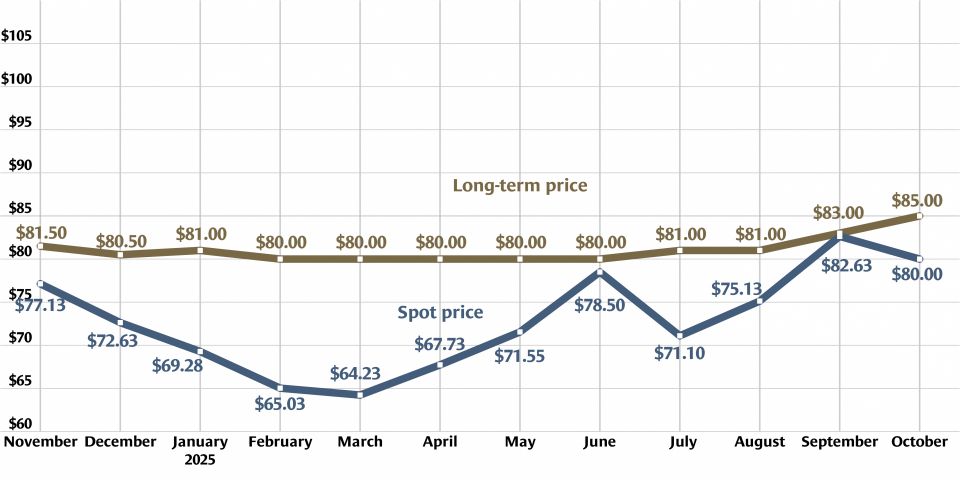The webinar, “Creating Value from Waste: Recycling Valuable Isotopes and Surplus Energy,” will be moderated by Steve Biegalski, of the Georgia Institute of Technology, and Tim Tinsley, of the U.K.’s National Nuclear Laboratory, and will feature Steve Palethorpe (NNL), Michael Rushton (Bangor University, Wales), Praveen Thallapally (Pacific Northwest Nuclear Laboratory), Katherin Goluoglu (Isotek), Harsh Desai (ZenoPower), and Robert Alford (NNL’s Nuclear Innovation and Research Office).
Before the expert panel looks ahead to the benefits of recycling spent nuclear fuel, it's time for another #ThrowbackThursday post. A look through the Nuclear News archives (available to all ANS members) turned up a few articles from 1977—the year that President Jimmy Carter made the decision to end the U.S. breeder reactor program. Several articles in the May 1977 issue of Nuclear News address that fateful decision Carter made back in April 1977.
The coverage starts on page 21 of that issue with a brief review of Carter’s April 20 address to Congress. The article states, “The president said we must ‘as a last resort’ increase our commitment to light water reactors; however, he told his audience, there are sufficient domestic uranium reserves to support these plants ‘for another 75 years, at least.’ As a consequence, he concluded, ‘It will not be necessary to use plutonium, and there will be no need to build a breeder reactor plant such as Clinch River.'"
As a side note, also included in that article was Carter’s plan to appoint a special panel to study the long-term effects on the atmosphere from carbon dioxide produced by burning coal, which eventually led to the assessment from the National Academies on climate change. These two actions by Carter still affect environmental policy today.
Then on page 33, John Graham, the ANS Washington editor at the time (and no relation to John Graham, past ANS president, 1995-1996), begins his report on nuclear policy developments under Carter. His coverage of the policy changes describes the “nuclear revisionism” taking hold of the Carter administration, which was trying to be a moral leader in nonproliferation rather than following the science. Graham said that Carter’s nuclear decisions did not allow for inputs from nuclear experts at the time, “while established nuclear opponents were brought into the administration to recommend policy.” This led Graham to believe there was nothing the nuclear community could have done to thwart the new policy, explaining the administration’s views to the cliché, "Don't bother us with facts; our minds are made up."
Continuing coverage of Carter’s “revisionist nuclear policy” can be found throughout the remaining issues of Nuclear News published in 1977. For example, the June issue featured an article (p. 54) by Chauncey Starr, then president of the Electric Power Research Institute (and past ANS president, 1958-1959), who argued against the shift in domestic policy. Starr asserted that ending the breeder reactor program in the U.S. would not limit the proliferation of nuclear weapons but instead would hinder the domestic industry. He wrote, “The U.S. has been moving toward prohibiting, or severely restricting, domestic use of the civilian fuel cycle, including plutonium reprocessing, and consequently postponing the U.S. breeder reactor option. This is being advocated on the ground that if the U.S. forgoes civilian reprocessing and the use of plutonium, and delays the breeder, other countries—energy hungry though they may be—will voluntarily deprive themselves of the full benefit of nuclear energy to follow our ‘moral leadership.’”
Hopefully, continued scientific dialogue like the discussion between experts on display via the ANS webinar can eventually change current policies and allow the nuclear community to realize the full potential of nuclear technology for the benefit of humanity.






